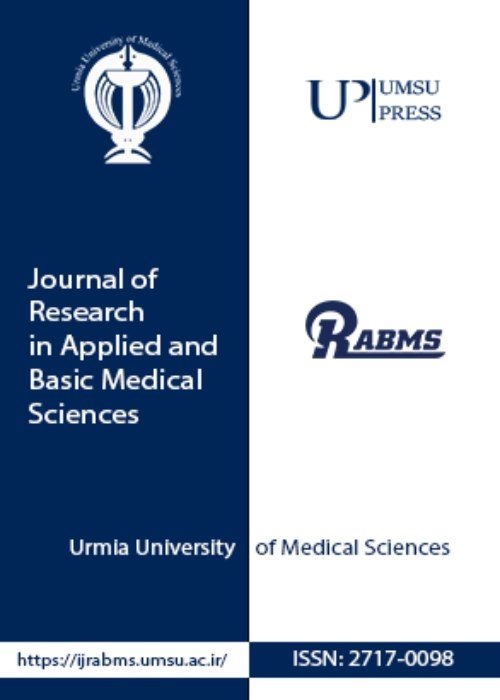فهرست مطالب
Journal of Research in Applied and Basic Medical Sciences
Volume:3 Issue: 1, Winter 2017
- تاریخ انتشار: 1396/02/11
- تعداد عناوین: 3
-
Pages 1-10
In the present paper the physicochemical incompatibility of sertraline with dextrose was evaluated in oral liquid formulations. Different physicochemical methods such as differential scanning calorimetry (DSC), Fourier-transform infrared (FTIR) spectroscopy and mass spectrometry were applied to assess sertraline - dextrose incompatibility. Non-Isothermally stressed physical mixtures were used to study the solid–state kinetic parameters. Different thermal models such as Friedman, Flynn–Wall–Ozawa (FWO) and Kissinger–Akahira–Sunose (KAS) were used to calculate the activation energy of drug-excipient interaction. The aim of this study was to evaluate the kinetic parameters using a fast and sensitive DSC method. Overall, the incompatibility of sertraline as an amine containing drug with dextrose as a reducing carbohydrate was successfully evaluated. DSC based kinetic analysis can provide rapid and easy evaluation of different drug-excipient mixtures incompatibilities. Special considerations should be made regarding the Maillard incompatibility reaction in the formulation design of liquid formulations containing dextrose or natural herbal extracts as sweeteners.
Keywords: Sertraline, Dextrose, Incompatibility, Kinetic, DSC, Mass -
Pages 11-19Background & Aims
Needle Stick Injury (NSI) is one of the important aspects of safety in healthcare centers which has major negative impact on staff and patients health. So, this study aims to assess NSIs status and its effective factors among nurses.
Materials & MethodsThis is a cross-sectional study which was done in Tabriz Imam Reza hospital using a researcher-made questionnaire. The obtained data are initially analyzed descriptively and then the relationship between background variables and NSIs aspects was assessed using statistical tests. All of analyses were conducted using SPSS16 and in all cases the significance of P was considered as less than 0.05.
ResultsThe study results showed that 34.3% of the nurses have had NSIs in the past year and its rate has been average 0.74 time per person annually. Also, it was revealed that there is a significant relationship between NSIs exposure and the variables of job, educational field, job experience and the hospital ward. It was shown that the graduated and working nurses, individual with less than five years of job experience and who working in operation rooms are more exposed with NSIs.
ConclusionsThe study results indicate that the status of NSIs in nurses is not satisfactory. It is clear that improvement of this condition requires designing and implementing effective interventions from health managers.
Keywords: Needle stick injury, Effective factor, Nurse -
Pages 20-26Background & Aims
Rheumatoid Arthritis (RA) is one of the common autoimmune diseases with unknown etiology. It has been suggested that antioxidant supplements may play a role in inflammation perpetuating process. This study examined the influence of combined antioxidant supplementation on serum asymmetric dimethylarginine (ADMA), vascular endothelial growth factor (VEGF) levels and high-sensitivity C-reactive protein (hs-CRP) as inflammatory markers in RA patients.
Materials & MethodsA three-month pre-post study was conducted on 40 female RA patients receiving one Selenplus capsule (Selenium 50μg, Zinc 8 mg, vitamin A 400 μg, vitamin C 125 mg and vitamin E 40 mg) daily. 5 ml venous blood samples were taken from all the participants before and after the administration period. The serum levels of ADMA, VEGF and high-sensitivity C-reactive protein (hs-CRP) were measured by standard methods.
Results39 out of 40 patients completed the study. In comparison with the baseline, we did not find any significant differences between serum ADMA and VEGF values before and after the intervention. The 3-month use of SelenPlus supplementation resulted in decreasing hs-CRP level (p<0.003).
ConclusionThe combined antioxidant supplements for 3 months decreased serum hs-CRP levels in RA patients that may be helpful in RA treatment. The hs-CRP reduction may due to the anti-inflammatory effects of Zinc and Selenium in SelenPlus supplement.
Keywords: Rheumatoid Arthritis, Antioxidant, ADMA, VEGF, C-reactive protein


